
Marilyn Monroe once mentioned that, “Give a girl the right shoes and she can conquer the world”. Every woman has a “high heels dream”, when you were little girl, most of you probably wear your mother’s or grandmother’s high heels secretly. Maybe you got your first high heels as a present at your adult ceremony, it might be a start of your high heels journey. You remember the first time you got your high heels, but do you know where is the first high heels in the word found? And do you know what was the fashion trends of during 20th century? Now, here is an article that will tell you an interesting story about high heels and also you can know about the latest trends of Spring 2019.
Origins of Heeled Shoes
Ancient Egypt
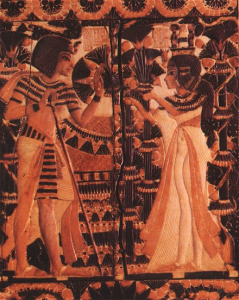
Dating back to 3500 B.C., in the Ancient Egypt, the earliest high heels’ depictions had been shown on the Egyptian murals. At that time, there were only two kind of people could wear heeled shoes. The first one was goal to the nobilities, females or males, who depicted on the murals we mentioned above. The nobilities wore the heeled shoes to set them apart from the lower class who were normally walk on barefoot. And the other people used it more practical, that is Egyptian butchers. They wore heeled shoes in order to walk above the bodies of animal carcasses and avoid Avoid getting blood on their shoes. High heels in Ancient Egypt were made from leather pieces which held together with lacing, which symbolized “Ankh” which presents the concept of life at the ancient Egyptian hieroglyph.
Ancient Roman and Greek
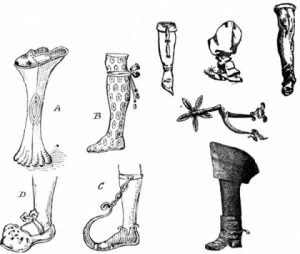
In ancient Roman and Greek era, platform sandals, also called “kothoni” or “buskins” that made with high wooden cork soles were a highlight. This shoes were especially popular among the actors, they usually wore them to distinguish the social classes and the importance of their characters. And in ancient Rome, high heels were associated with prostitution. Because sex trade in Rome was legal, and high heels was an identification of potential clients in this trade.
Middle Ages in Europe
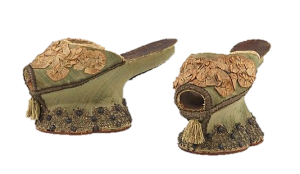
The next appearance of high heels could be trace back in the Middle Ages, particularly in Europe. During that time, “patterns” was fashionable for both men and women. Do you know why did they have interest on this kind of footwear? Because the streets of many Medieval European cities were full of mud and dirt, and they wore the patterns just in order to keep their expensive and fragile footwear clean.
Middle Ages in Turkey
And at the same period, during 1400s, “Chopines” or platform shoes became welcome in Turkey. It is especially for women designed about 30 inches high above ground, so when they were walking, they need servants to assistant them. And it is said that the higher chopines you wear, the higher status you have. From this time, heels were starting to be marked into an aesthetic object, not for practical use at the earlier time.
Later, in the 1500s, shoes were divided into two pieces, a movable upper that attached with a suitable and stable sole. This invention made the heels become an actual part of the shoes. Also, the new invention of heeled riding boots increased the huge popularity of heel within both men and women due to the prevention of 1 to 1.5 inches heels from slipping off the stirrups. As time went by, the shape of heels were becoming more and more fashionable. During 1500s, they were designed much thinner and higher by Catherine de Medici.
Middle Ages in France

In around 1533, high heels were first designed to lengthen the legs for women. The lady we mentioned above, Catherine de Medici, when she was 14 years old, was engaged to Duke of Orleans who later became the King of France. And Duke was much taller than his fiancee, and it made de Medici feel so unsafe because Diane de Poitiers, Duke’s favourite mistress, was relatively tall. So she needed to got a plan to make her look higher and more attractive in the Frenchmen eyes. Later facts showed the future French Queen – Catherine de Medici succeed. Her secret weapon was a two-inches-high heels which made her higher and attractive when she moved. And then, this kind of high heels were soon popular and became a symbol of wealth and privilege. In 1590, stylized heels were welcome for no matter female or male, and at that time, “well-heeled” was usually a title for a wealthy and authoritative person.
Downs of High Heels
“Louis heels” 
In the early 18th century, France’s King Louis XIV (The Sun King) declared that only upper classes could wear the colored les talons rogue(red) high heels. And he enacted a low that no one could wear heels were more than his 5 inches “ Louis heels” which was decorated with miniature battle scene on it. During the period, the heels became longer and more slender, and under the impact of society, the heel was combined with the idea of eroticism of foot or the foot wear itself. This kind of ideal was established by the literature, art and fashion. And later in the Rocco era, the heels became higher and more slender on its decorate and ornamental flair, which with the delicate feminine court manner. Moreover, a writer named Restif de Bretonne paid more erotic emphasis on the beautiful curve of the heel and delicate arched foot, so women bundled and shrank their foot to make shoes were not so obvious.
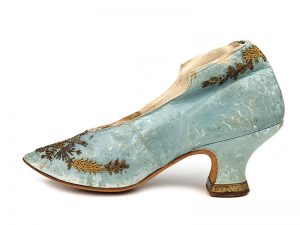
Prohibition of High Heels
High-heeled shoes like corsets are used to shape the body, giving the illusion of aristocratic, healthy, subtle and ideal qualities. In many parts of Europe, people attach great importance to the sexual desire of the wearer of the heel. This has been noticed in the new world, where high-heeled pornography is not seen as a positive influence in society. The Puritans in the Massachusetts colonies passed a law prohibiting the use of footwear as a female to trap and seduce men, or they will be tried for witchcraft. However, in the United States, attitudes towards women’s fashion have gradually improved, but it was not until the middle of the 19th century that the trend caught up with Europe.
Disappearance of Heels

The French Revolution witnessed the disappearance of high heels. At this time, high heels are associated with the rich and wealthy. Therefore, most people want to avoid any signs of luxury and affluence, which eliminates the trend of high heels in the male and female markets. Napoleon has given up “Louis high heels” in an attempt to promote equality. With this code, this trend completely disappeared during the French Revolution. The aristocrats in society chose low-heeled shoes and flat-heeled shoes, and with the emergence of economic recession and bankruptcy, they changed the simpler style. However, despite the Napoleonic Code against high heels, Marie Antoinette wore two inches of high heels to the guillotine, where she was executed for treason.
The Revivals of High Heels
After the French Revolution, high heels were lower than at any time in the 18th century. It is simplified to be merely a wedge replaced by a spring heel, which is inserted over the sole of the shoe behind the shoe. These fragile shoes are tied around the ankles with ribbons, similar to classic Roman sandals. High heels did not return until the mid-19th century. The Victorian era is known for its dance, so the function of a flatter ballet is preferable. Scorpion slippers are also popular, with open heels and closed uppers. These later evolved into a style that included ankle cover that could shield the feet from typical British weather. When the heels reappeared in the late 19th century, they were almost entirely worn by women and were no longer suitable for both sexes. From this era to the 1920s, Western women wore four main high heels: knock-on, stacked waists, springs, and the re-emergence of Louis.
High Heels in the 20th Century
Turning Point of Era
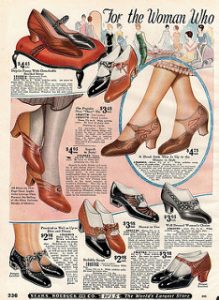
At the background of suffrage movement and the awareness of women’s right improving, the demand of comfortable footwear in 20th century let the heels become flatter and sensible. From 1850s to 1920s, the heel stayed under 2 inches which brought high heels fashionable back again. The revival of high heels in the “Roaring 20’s” is partly due to bold fashion, which requires bolder footwear.
Plummeted Under the War
The Great Depression in the 1930s plummeted the high heels in popularity. People called for more fixed, practical shoes with lower and wider heels. Later the years of 1940s post World War Ⅱ caused the heels thicker, because materials had to be rationalized not the luxury as the main concern.
Rebirth of Heels
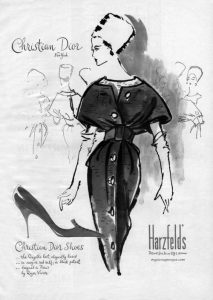
It was not until the 1950s that fashion designers such as Christian Dior appeared, and high heels were once again popular. Dior collaborated with shoe designer Roger Vivier and the look of the pointed heel which called “the needle” was recognized by many consumers. The fashion world had become its own world and had turned itself into a very successful industry. In the store, you can see more and more footwear designs, the arrival of Hollywood alarms, such as Marilyn Monroe and Audrey Hepburn, After putting on high-heeled shoes, the suit worn by the body was even more swaying, and finally the popularity of high-heeled shoes was pushed to a climax. This stiletto originated in Italy and was named after the dagger in the 1960s, and the dominant footwear fashion appeared on high boots with high skirts. During this time, the kitten heel is also very popular where stilettos were the Monroe’s of the era, kitten heels became the Hepburn.
In the 1970s, there was a turn point of heel style and slim stiletto replaced by the chunky platform shoes which was worn by both male and female again. This is the latest Flower Power variety of kothorni and chopines of the early era. In the 1980s and 1990s, designers like Manolo Blahnik brought the return of high heels, and high heels and fashionable shoes were brought to the runway, Hollywood and eventually every woman.
Heels Today
Heels to Be High Heels
High heels may give the illusion of a longer slender leg. High heels come in various forms such as: stilettos, wedges, pumps, blocks, and cones. There are also kitten heels – smaller versions of stiletto, puppies, prisms and bobbins. The footwear industry that created high-fashion shoes, such as Jimmy Choo and Gucci, said that 2.5 inches is considered as a low-heeled shoe, medium-heeled shoes are between 2.5 and 3.5 inches, and high-heeled shoes are higher than 3.5 inches. But there is another different opinion from the clothing industry who believes that anything between 2 inches and 5 inches is considered high heels.
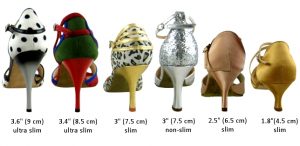
As today, the heeled shoes have helped create the modern sex symbol but not erotic any more for female. All types before are also applied today, and with the return of pointy toed stiletto, all styles are in vogue. Looking back of the ups and downs offers a view into the history of high heels. People will pay more emphasis on the comfort of the shoes, but the beautiful outlook is always a key point. Every woman has the right to make herself more attractive now, they deserve to wear shoes which can match her outfit and elegant.
As the Spring 2019 collections hit the runways, we can see that the modern fashion heels is totally a combination between “old” and “modern”. The stiletto is decorated with the Roman styled rope, plastic or lace, the wedges made of denim, the upgrade of shoes in the Ancient Egypt, and so on. The appearance of heeled shoes today are becoming bolder on the basis of the previous style.
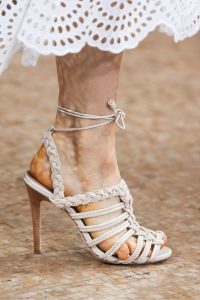
Ulla Johnson
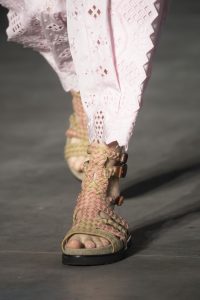
Alberta Ferretti
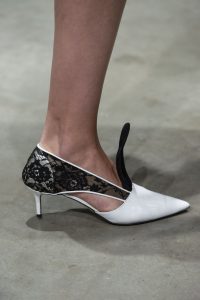
Christopher Kane
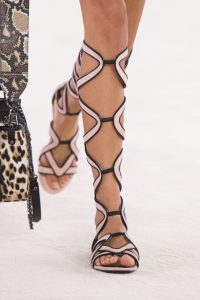
Longchamp
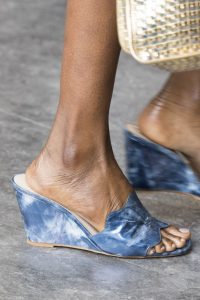
Maryam Nassir Zadeh

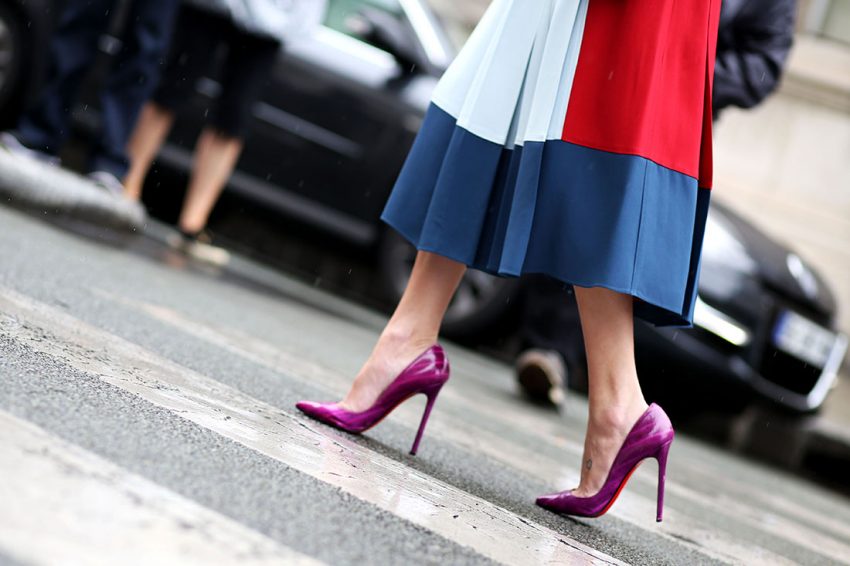




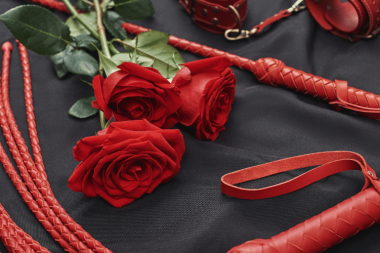



Leave a Reply